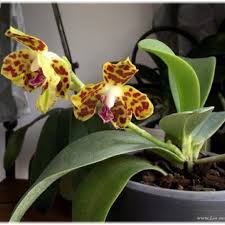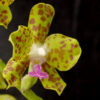Chinese Cuisine in Traditional Festivals: A Culinary Celebration of Culture and Tradition
Chinese cuisine is renowned for its rich diversity and deep cultural significance. The flavors, ingredients, and cooking techniques vary across the country’s regions, yet all share one common thread: food is a fundamental part of Chinese traditions and festivals. In China, meals are not just about nourishment; they represent respect for ancestors, good fortune, health, and prosperity. This article delves into how Chinese food plays a central role in traditional festivals, exploring the symbolic meanings behind the dishes and the customs that make these meals truly unique.
1. The Role of Food in Chinese Festivals
In Chinese culture, food is considered a bridge between the physical and spiritual worlds. During festivals, food is believed to carry significant meanings and convey blessings for the future. The ingredients used, the cooking techniques employed, and the presentation of the dishes all have symbolic implications, often associated with wishes for prosperity, long life, wealth, and happiness.
During festivals, families gather to celebrate with elaborate feasts, and every dish has a story to tell. The meals represent more than just sustenance—they are expressions of the Chinese people’s connection to their heritage and cultural identity.
2. Chinese New Year: The Feast of New Beginnings
The Chinese New Year (also known as the Spring Festival) is perhaps the most important and widely celebrated festival in China. It marks the beginning of the lunar new year and is a time for families to reunite and celebrate the blessings of the past year while welcoming a new one with hope and joy. The food served during Chinese New Year is rich with symbolism, as many dishes are believed to bring good fortune and ward off bad luck.
Dumplings (Jiaozi): Symbol of Wealth
Dumplings are one of the most popular foods eaten during Chinese New Year. Shaped like ancient gold ingots, dumplings are thought to represent wealth and prosperity. The tradition of eating dumplings is especially common in Northern China, where families will gather to make and eat these little pockets of good fortune together. It is believed that the more dumplings one eats, the more wealth they will accumulate in the coming year.
Fish (Yu): Symbol of Abundance
The word for fish, “yu”, sounds similar to the word for “surplus” or “abundance” in Chinese. Therefore, fish is a traditional dish served during the Chinese New Year to ensure there will be plenty in the coming year. It is customary to leave a portion of the fish uneaten, symbolizing that there will always be a surplus for the family.
Nian Gao (Glutinous Rice Cake): Symbol of Progress
Nian Gao is a sticky rice cake made with glutinous rice flour. It is often served during Chinese New Year because its name, which sounds like “year-high,” symbolizes the wish for progress and growth in the coming year. The cake is sticky, representing the idea of a strong and continuous upward trajectory in one’s life, whether in terms of career, wealth, or personal growth.
Oranges and Tangerines: Symbol of Good Luck
In Chinese culture, oranges and tangerines are considered symbols of good luck because their Chinese names sound similar to the words for “wealth” and “luck.” These fruits are often gifted or placed on the dining table as a sign of prosperity and good fortune.
3. The Mid-Autumn Festival: A Time for Reunion and Gratitude
The Mid-Autumn Festival, also known as the Moon Festival, is another important holiday in Chinese culture, celebrated on the 15th day of the 8th lunar month. This festival centers around the theme of family reunion, as families come together to enjoy the full moon, appreciate the harvest, and celebrate unity and harmony.
Mooncakes: The Iconic Festival Food
One of the most iconic foods of the Mid-Autumn Festival is the mooncake, a round pastry typically filled with lotus seed paste, red bean paste, or salted egg yolks. The round shape of the mooncake symbolizes the full moon and the idea of completeness and unity. Traditionally, mooncakes are exchanged between family members, friends, and business associates as a gesture of goodwill and respect. They are a symbol of family unity and the hope for a happy and prosperous year.
Pomelo: Symbol of Protection and Blessings
Pomelo, a citrus fruit, is often consumed during the Mid-Autumn Festival. The fruit’s shape, resembling a moon, and its association with the harvest make it a fitting food for the occasion. In addition, the word “pomelo” in Chinese sounds like “to have children” or “to be blessed,” making it a symbol of family blessings and good fortune.
Steamed Cakes (Bing): Representing Wishes for Happiness
Steamed cakes, or bing, are often served as part of the Mid-Autumn Festival feast. These cakes, usually made with ingredients like rice flour, sugar, and lotus seed paste, represent wishes for happiness and long life. The soft and moist texture of these cakes reflects the smoothness and sweetness of life.
4. The Dragon Boat Festival: Food to Ward Off Evil Spirits
The Dragon Boat Festival (also known as the Duanwu Festival) is celebrated on the 5th day of the 5th lunar month. The festival honors the memory of the famous poet and statesman Qu Yuan, and it is marked by dragon boat races and the consumption of zongzi (sticky rice wrapped in bamboo leaves). The festival is meant to ward off evil spirits and ensure a good harvest.
Zongzi: A Symbol of Protection and Health
Zongzi, which are sticky rice dumplings filled with a variety of ingredients such as pork, beans, and mushrooms, are the traditional food of the Dragon Boat Festival. The act of wrapping rice in bamboo leaves and tying it with string is believed to ward off evil spirits. Zongzi is also eaten to promote health and prevent disease, as it is traditionally consumed to ensure good luck and protection for the family.
5. The Lantern Festival: The Sweet End to the New Year Celebrations
The Lantern Festival marks the final day of the Chinese New Year celebrations, falling on the 15th day of the first lunar month. The festival is characterized by vibrant lantern displays, lion dances, and the consumption of tangyuan (sweet rice dumplings). This festival symbolizes the reunion of family members and the wish for a smooth, prosperous year ahead.
Tangyuan: A Symbol of Family Unity
Tangyuan, which are sweet, glutinous rice balls filled with ingredients such as sesame paste, red bean paste, or peanut butter, are commonly eaten during the Lantern Festival. The round shape of the rice balls represents unity and family togetherness, and their sweetness symbolizes harmony and happiness. The act of eating tangyuan is a way of praying for good fortune and wishing for a smooth and successful year.
6. The Qingming Festival: Honoring Ancestors with Food
The Qingming Festival, also known as the Tomb Sweeping Day, is celebrated on April 4th or 5th. It is a time for families to honor their ancestors, clean their graves, and offer sacrifices. Food plays an important role in the offerings made to ancestors during this festival.
Qingtuan: Offering to Ancestors
Qingtuan, green rice balls made with glutinous rice and filled with sweet bean paste, are a traditional food consumed during the Qingming Festival. These rice balls are often offered to ancestors as part of the tomb sweeping rituals, symbolizing respect and remembrance. The green color of the qingtuan is a symbol of the season’s new growth and the renewal of life.
7. The Importance of Food in Other Festivals
Chinese cuisine also plays a key role in many other traditional festivals, such as Double Ninth Festival (Chongyang Festival), where chrysanthemum wine and cakes are consumed for longevity, and Laba Festival, which features Laba congee, a rice porridge believed to bring health and longevity.
In all these festivals, food is more than just sustenance; it is a medium for connecting with loved ones, honoring ancestors, and welcoming good fortune. Each festival’s special dishes carry deep meanings, and the preparation and consumption of food become rituals filled with cultural significance.
Conclusion
Chinese cuisine is inextricably linked to the country’s traditional festivals, serving as a way to convey wishes for prosperity, health, happiness, and family unity. The food consumed during these festivals is rich in symbolism, and every dish tells a story about Chinese culture, history, and beliefs. Whether it is the wealth-bringing dumplings of the Chinese New Year, the family-oriented tangyuan of the Lantern Festival, or the ancestral offerings of Qingming, Chinese food during festivals is a celebration of life, love, and good fortune. By understanding the role of food in these traditions, we gain a deeper appreciation for how food shapes not only our diets but also our cultural identities and the way we connect with the past and future.


